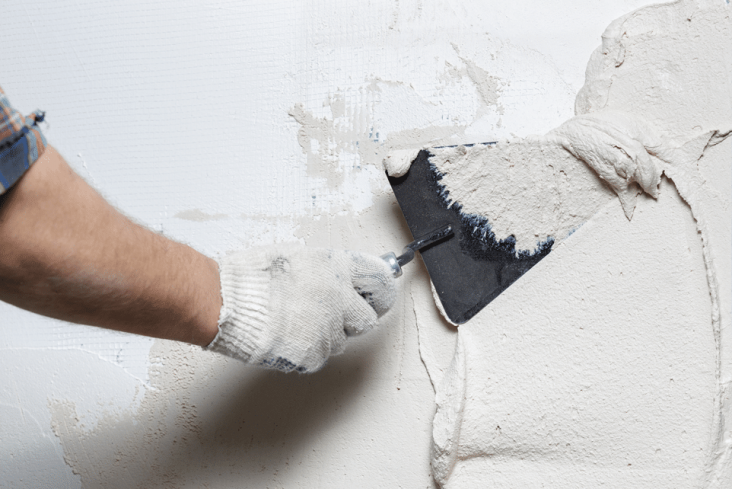Plaster Repairs Greenwich CT

Repairing minor plaster damage to your walls
Plaster-and-lathe walls are those walls that are made of thin strips of wood fastened across the wall studs that provide a secure surface for a wet mix of plaster to be spread and layered up to become the wall of a room. Plaster walls, especially those in older homes like those found in Greenwich and surrounding communities, can show cracks from the home’s foundation settling over time. Furniture bumping against plaster walls can create dents and pits in a wall’s plaster surface, too. The ebb and flow of daily life can take their toll on a home’s plaster walls.
Types of plaster repairs.
Spider cracks. Spider cracks in a plaster wall are so named because they resemble a spider’s legs radiating from a central point (fault) in the surface. Most often, spider cracks are difficult to repair as you find them. For the new spackle or plaster to adhere sufficiently to the wall surface, the cracks need to be opened up a bit so that the new material can grip the existing plaster and fill the crack. A bottle opener with a triangular head on it is a good tool to help clear any loose plaster away from the crack and to open it to receive and hold on to the new plaster.
Dents and holes. These are an outright breech of the plaster that may expose the interior of the wall will require more attention than a patch and skim coat of new material can provide. The first step in repairing a dent or hole in the plaster is to clean the void of any loose plaster or wall insulation. If the hole is especially large or deep, some wadded-newspaper pages stuck directly in the space can help even the surface for the new material. Using a trowel or putty knife to build up the layers of plaster will fill the hole adequately, but it may require several applications and sandings before for the wall surface is ready to paint.
Chips and gouges. Chips or gouges to a plaster wall typically occur on the outside corners where the walls meet and turn. Physical activity is often the culprit and this type of repair is trickier than others. The best solution is to repair each side of the corner separately and as if it wasn’t a corner at all by using a long strip of wood or furring strip to extend the wall surface beyond the corner. Once one side of the corner is repaired you can move to the other side of the corner with the same method.
After prepping the surfaces and applying the new plaster, a successful plaster repair job will then require sanding the patch or repair to blend it in with the existing surface. This process may be required several times before the patch starts to look seamless. This is where the job of plaster repair becomes the art of plaster restoration.
Designs Unlimited are the undisputed experts in plaster repair and restoration for new or historic homes in Greenwich, CT and surrounding areas for more than twenty years. Designs Unlimited’s highly trained employees (never sub-contractors) specialize in panting/staining, wood/plaster restoration, carpentry, wallboard/taping, wallpaper hanging, and color coordination & theory. When considering patching or repairing a plaster wall in your home, remember these tips and call Designs Unlimited. They’re goal is to not only help you improve and restore your home, but to make the process easy and enjoyable for you.

